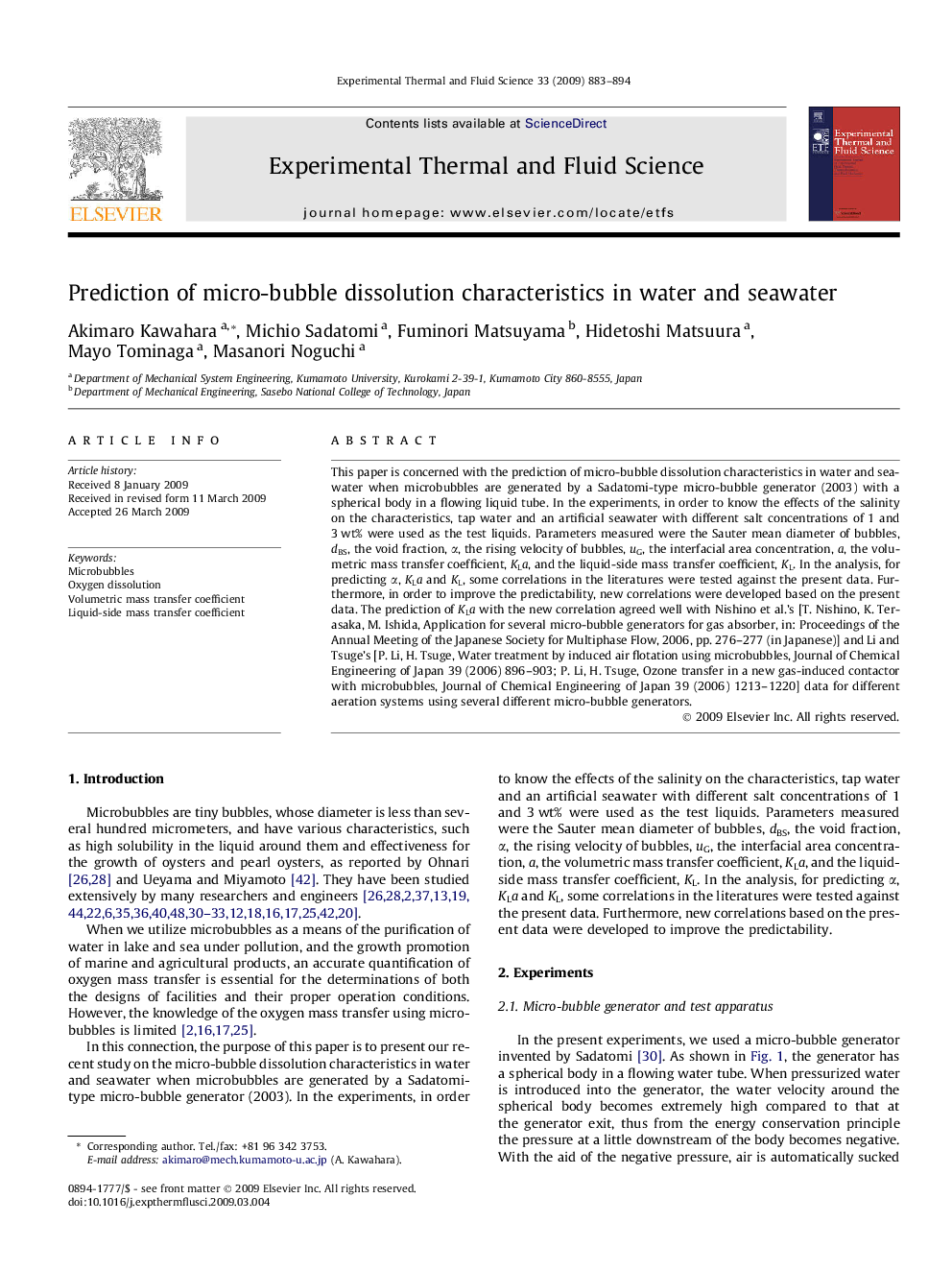| Article ID | Journal | Published Year | Pages | File Type |
|---|---|---|---|---|
| 652069 | Experimental Thermal and Fluid Science | 2009 | 12 Pages |
Abstract
This paper is concerned with the prediction of micro-bubble dissolution characteristics in water and seawater when microbubbles are generated by a Sadatomi-type micro-bubble generator (2003) with a spherical body in a flowing liquid tube. In the experiments, in order to know the effects of the salinity on the characteristics, tap water and an artificial seawater with different salt concentrations of 1 and 3 wt% were used as the test liquids. Parameters measured were the Sauter mean diameter of bubbles, dBS, the void fraction, α, the rising velocity of bubbles, uG, the interfacial area concentration, a, the volumetric mass transfer coefficient, KLa, and the liquid-side mass transfer coefficient, KL. In the analysis, for predicting α, KLa and KL, some correlations in the literatures were tested against the present data. Furthermore, in order to improve the predictability, new correlations were developed based on the present data. The prediction of KLa with the new correlation agreed well with Nishino et al.'s [T. Nishino, K. Terasaka, M. Ishida, Application for several micro-bubble generators for gas absorber, in: Proceedings of the Annual Meeting of the Japanese Society for Multiphase Flow, 2006, pp. 276-277 (in Japanese)] and Li and Tsuge's [P. Li, H. Tsuge, Water treatment by induced air flotation using microbubbles, Journal of Chemical Engineering of Japan 39 (2006) 896-903; P. Li, H. Tsuge, Ozone transfer in a new gas-induced contactor with microbubbles, Journal of Chemical Engineering of Japan 39 (2006) 1213-1220] data for different aeration systems using several different micro-bubble generators.
Keywords
Related Topics
Physical Sciences and Engineering
Chemical Engineering
Fluid Flow and Transfer Processes
Authors
Akimaro Kawahara, Michio Sadatomi, Fuminori Matsuyama, Hidetoshi Matsuura, Mayo Tominaga, Masanori Noguchi,
